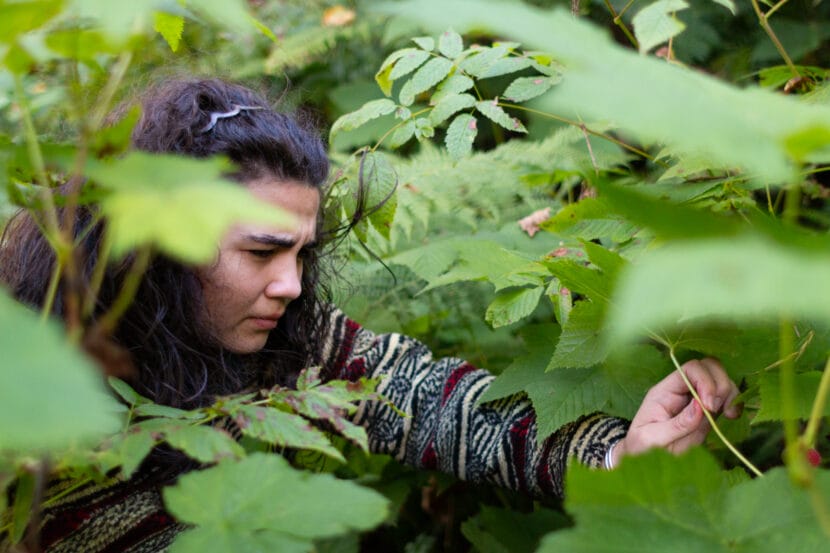
This is Tongass Voices, a series from KTOO sharing weekly perspectives from the homelands of the Áak’w Kwáan and beyond.
Kushx̱eet.éesh Bowers, also known as Kaasgéiy, was 5 when he moved to Juneau to grow closer to his Native identity. He’s 18 now, and hiking along Basin Road recently, Bowers talks about harvesting and his path to identifying as a two-spirit person.
Listen:
This transcript has been lightly edited for clarity.
Kushx̱eet.éesh/Kaasgéiy Bowers: My name is Kaasgéiy or Kushx̱eet.éesh. I’m Shangukeidí of the Eagle moiety. My people come from Klukwan and Angoon and the L‘eeneidí are my grandparents and my great grandparents people, my outer shell.
I moved to Juneau on my fifth birthday. And I lived between two homes of my mom and dad. My mom was very, she was very supportive with us being involved in our culture. And the whole reason we moved to Juneau was so we could learn our culture. So she involved us in dance groups, she tried to enroll us in TCLL (Tlingit Culture Language Literacy program), she took us fishing, berry picking. Since I was five, I’ve gone berry picking. And she always took me on her hikes before I could even walk in a small backpack, and I got to eat the tallest berries! It was the best.

My interest in plants peaked in high school when I learned the importance of living off the land and the full cycle of reciprocity that comes with it. I feel harvesting for me is a huge part of my cultural identity and helps me bond with other Native people. Also, when you open your freezer and it’s full, it fills your heart, just…not even eating yet! It’s my favorite.
But there’s all the brown yaana.eit that got the most sunlight. Up there is where the green yaana.eit is, and right next to it is thimbleberry. It’s a late summer berry, it has no real body of its own. It actually collapses in your hand. Mm.
When I first discovered the term two-spirited, I think it was 2022, at Alaska Federation of Natives, AFN. There was, led by a two-spirited person. And that was the first time I’d ever encountered it. I was maybe 15, 16? And I didn’t know – I thought it was only for down south Native people, so I didn’t for a long time, I wouldn’t use the term and I wouldn’t identify under it, even though maybe it was set aside for all Native people.
Before I graduated, I was like, well, I do feel actually very akin to having a female and male spirit within my body. I hold reverence for many of the feminine figures who played a huge role in my life, in the development of well, myself as a person. I don’t ever want to stop identifying with my female Lingít name out of respect and recognition of that. But very often, I want to be seen as male, always. And instead of Kaasgéiy, I might legally change my name to Kushx̱eet.éesh, so then again, I can step into that.
Now, I serve male role in ceremony, but when I was younger, it was strictly female role that I served. And now I’m just learning to dance the way a guy would. And you can still see me, I look more like a dying ptarmigan, but learning is how it is. You watch, you see, and you repeat.
I want to provide more resources for our community, especially maybe queer Native people, because it is hard. It’s huge, especially for a younger person who may not have control over every aspect of their life. Maybe, if I talk about it more often, and more people hear it, one of them could be a young, 16-year-old who only saw it once at a council meeting. And maybe they, too, will feel that they can identify with that.
